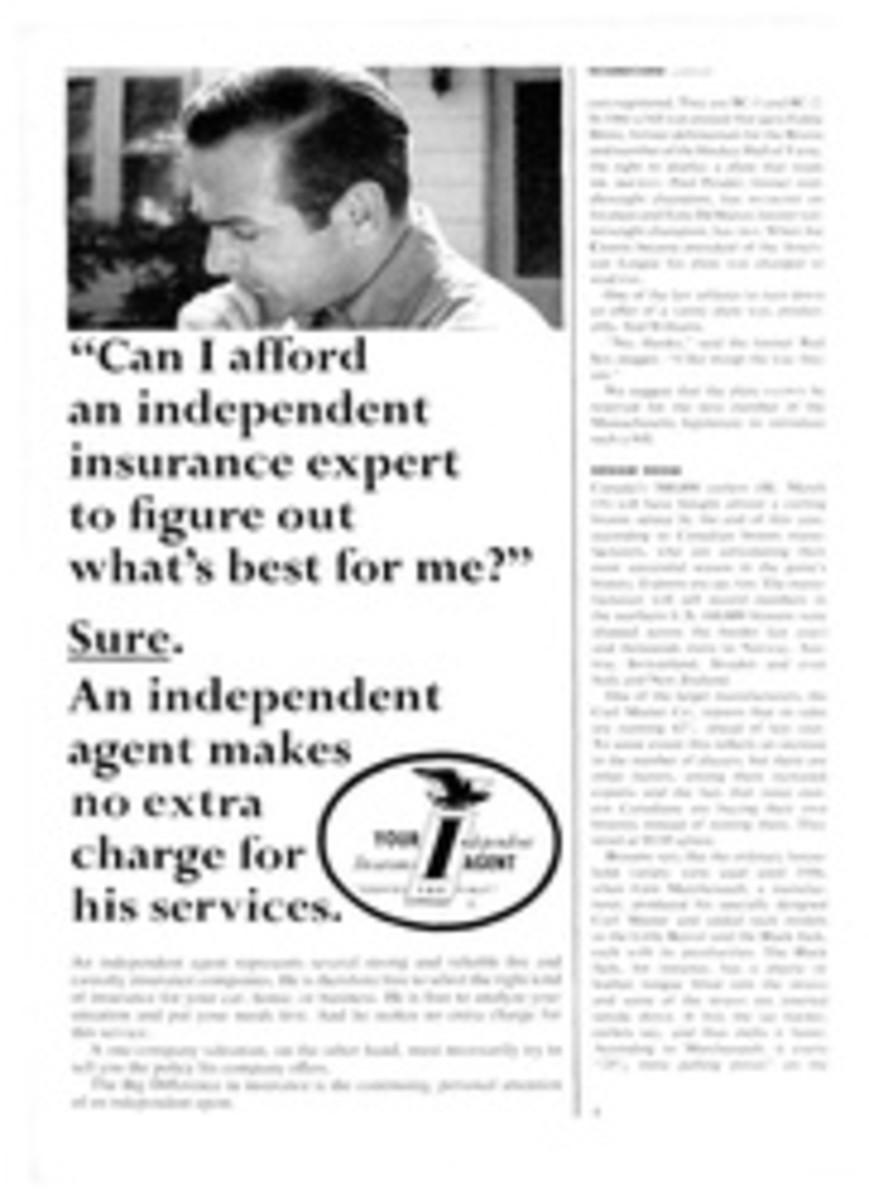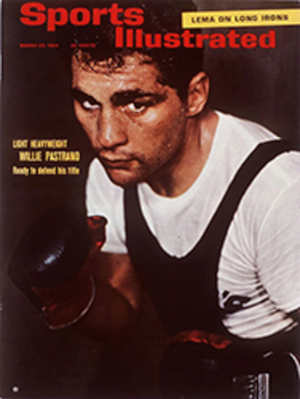
ONCE AROUND THE CLOCK SWIFTLY ROLLING
The driver sprints to his car, jumps in and, with 60 other racers careening about him, embarks upon the 12 Hours of Sebring. Once around the clock goes that fierce parade, wailing through the Florida day and stabbing headlight beams into the night. This ballet of men and machines, which begins again next week, is the foremost sports car race in the country. It is America's reach for the glamour of Le Mans and the car-killing rigors of the N√ºrburgring, a blending of old-world accents and new-world brashness. As Artist Allan Mardon suggests on the following pages, Sebring is also a pageant of contrasts. It is speed and noise and daring brushed into a flat, forbidding landscape. It is a sun-cracked old airfield, a place of derelict World War II planes and tumbledown hangars—and of marvelous purebred cars and the world's most brilliant road-racing drivers. The owls that peer out from the infield are the only calm creatures in a storm of color and motion.
Sebring's gaunt, green pit row is its command center and its social hub. with spaces for each team's crew and supplies at track level. From the deck above, car owners and their guests watch race action and pit work.
Inside the pit wall (below), where fuel and gear for emergency repairs are ready, a driver stands poised to relieve his teammate. A signal from a crewman on the track side of the wall will notify the other driver to pull in.
Racers on the circuit's airport section speed past derelict World War II cargo planes, which are Sebring's Big Ben and Eiffel Tower, symbolizing the course for the fans. The terrain itself is featureless.
Splashes of Ferrari red brighten a decaying airport shop, used as a makeshift garage. Mechanics are accustomed to performing their meticulous tuning-up operations wherever circumstances put them.
In darkness the winner takes the checkered flag after an exhausting 12 hours of racing.
ANYBODY HERE KNOW FANGIO?
To people who fancy pure cars and hate automatic shifts there is one stunning shortcoming in American-style racing. The grand old game has been steadily degenerating, they insist, since that black day when the first banked, oval speedway was built. Real racing, they insist, is the science of man, machine and gearbox rolling along an open-road course that twists all over the countryside.
Next week, such leanings will bring some 50,000 people to an isolated mid-Florida airfield to view a road race of near-stainless purity: the 12 Hours of Sebring. The war-surplus airfield is too small for jets and too big for the town, which makes it just right for racing. Five and two-tenths miles of runways, cross runways and connecting roads have been laid out in a wandering course that isn't much like the famous circuits of Europe but has a certain rough charm of its own. To race a lap at Sebring at top speed requires at least 28 well-meshed gear changes; to last 12 hours takes a patient kind of skill. On the field's north-south runway a healthy sports car can hit speeds approaching 200 mph. This fine blur extends for 4,500 feet, then ends in a sudden right-angle turn to the west. Not all of the cars make it—and runaways end up on the grassy fringe among the meadowlarks and nesting owls.
Sebring is an endurance test for spectators as well as cars. Why do they attend? To road-racing mainliners like Alec Ulmann, the man who puts on the show, that question is academic. Better ask, why attend anything else? The 12 Hours of Sebring has been Ulmann's personal crusade from the start. A Russian-born, MIT-trained man of intermediate size and immense Continental flair, he is also a man trying to speed up the U.S. renaissance in road racing. Ulmann started the race at Sebring 16 years ago and since has supported his habit with occasional shots of private income as an aeronautical consulting engineer. Ulmann first imported the big postwar racing stars to this country—and most Americans at the time could not have cared less.
"When I brought Juan Manuel Fangio here to race in 1954," says Ulmann, "he was the world champion, an international celebrity and the best racing driver of all time. I put him up at a local hotel, and in a few minutes I got a telephone call from the manager. Fangio was in the lobby and wanted a police escort so he could go down to the garage and inspect his car. A police escort? Certainly. Fangio was afraid he would be mauled by crowds of adoring fans who would tear off his very clothing.
"I'm afraid I had to tell the manager." Ulmann recalls, "that Fangio could walk down the streets of Sebring wearing a big sign that said 'I am Fangio the Great' and nobody would have known who the devil he was."
The crowds are larger and more knowledgeable now. Next week they should see something worthy of their knowing attention.
Since the Ford Motor Company plunged into racing three years ago, one of its great objectives has been to out-run the intense red Ferraris of Maranello, Italy. Ford threw in a brigade of engineers, backed with a budget running into the millions, and recently asked ex-Racer Carroll Shelby to boss the road-racing segment of the push. Now the chaser is closing in. Last month Ford's GTs were one-three in the Daytona Continental, a 1,243-mile race that wings around and inside the Daytona speedway. Amazingly, the Ferraris folded. At Sebring, Ford and Ferrari face a mutual new threat. This year undisguised, all-out, one-of-a-kind sports racers are back, and the Grand Touring and prototype cars of Ford and Ferrari could be taken by beasts like the Chevy Chaparral. In any case, across the starting line next week the array of cars and drivers will be a social register of speed, with such items as English MGs and Triumphs. German Porsches and Italian Alfa Romeos as intriguing, in their way, as the larger stuff.
Your aunt in Abilene might be confused by the variety of shapes and model names, but the true Sebring fan reads romance into every name and make. Nor does he need, in these sophisticated days, an idiot card to identify the driving celebrities. The racing line this year includes helmeted heroes in the Fangio mold, from Scotland's dashing Jim Clark—the 1963 world champion—to Dan Gurney, one of America's top drivers, certainly its handsomest. Other ex-world champions on deck are America's Phil Hill and England's Graham Hill (no kin), he of the pencil mustache and Hairbreadth Harry profile. Pedro Rodriguez adds a touch of Mexican hot sauce to the rakish Ferrari team. Other drivers are nearly as well known. The purse is not the lure—Sebring offers a modest $40,000 total package—and facilities are done in a style called racetrack primitive. But the international stakes are big.
Ulmann concedes that Sebring could stand some dressing up. "In staging this race," he says, "we have concentrated first on a functional track. We have funny little bleachers we put up and take down. If we could find a sugar daddy we could have creature comforts, as at Le Mans. Those quaint little sidewalk cafés right at the track. Perhaps little restaurants and bistros...."
On the other hand, if an American car beats the Ferraris, there will be no complaints.
SEVEN ILLUSTRATIONS

